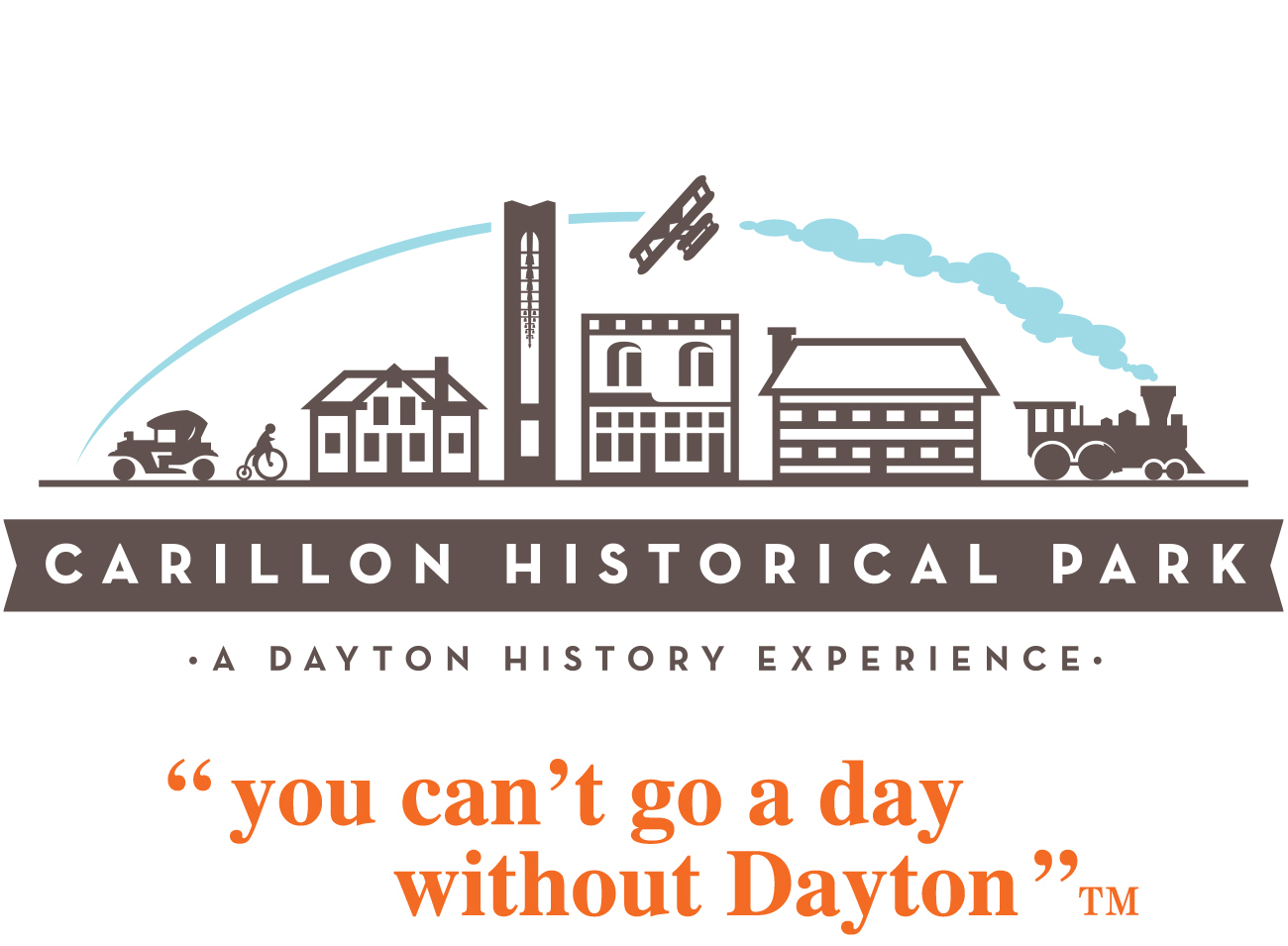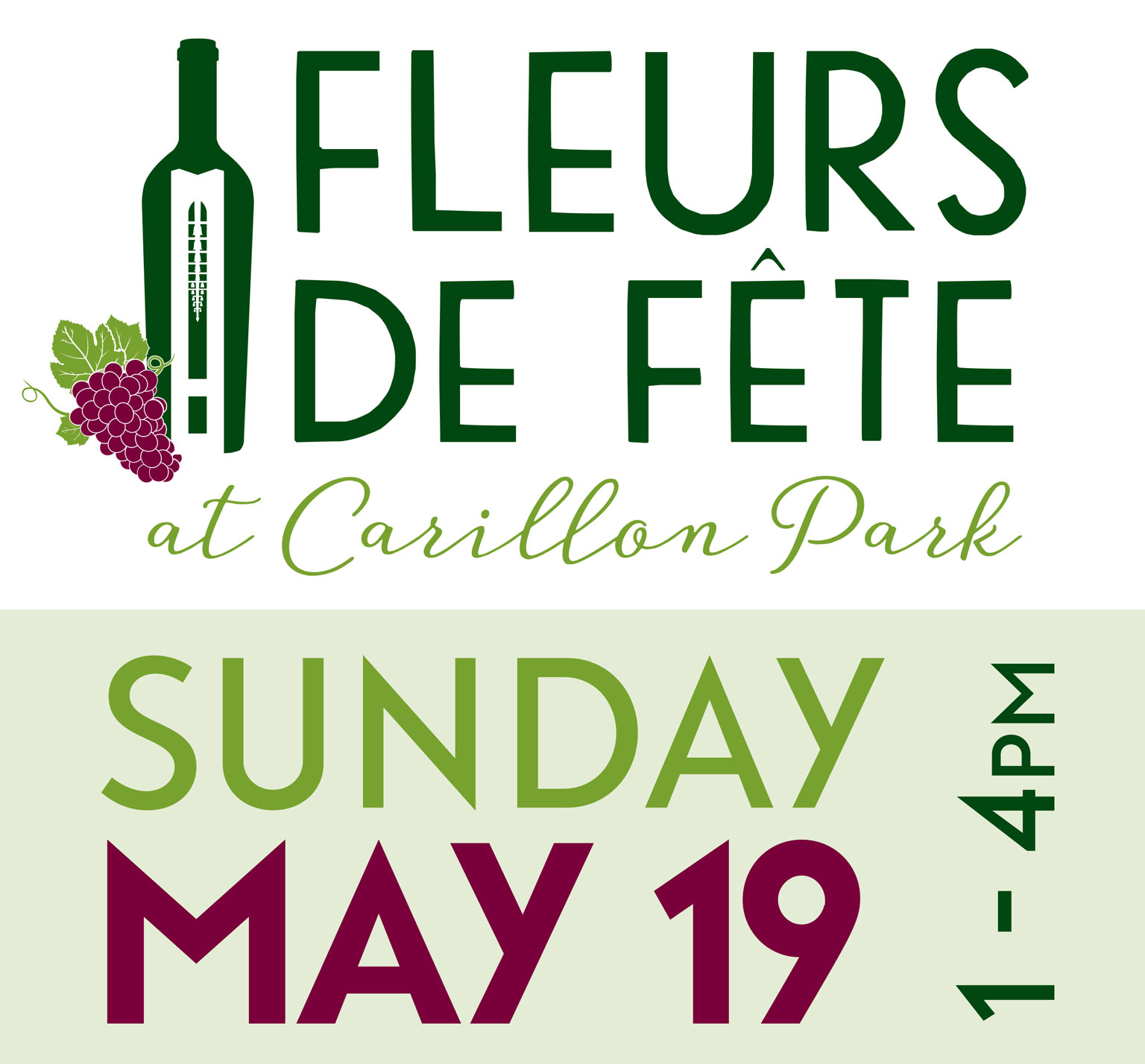1940
Educational & Musical Arts Inc. was created by Edith Deeds and Colonel Deeds to build Deeds Carillon.
1942
Construction of Deeds Carillon was completed during a two-year period. Edith Walton Deeds oversaw the entire project from start-to-finish. At the time of completion, Deeds Carillon was one of only six free-standing carillon towers in the United States. It originally consisted of a 151.5 foot tower and 32 bells (23 active, 9 silent).
On Easter Sunday, April 5, an Easter Sunrise Service was held at Deeds Carillon, a tradition that continues today. The official dedication and first regularly-scheduled concert were held on August 23. Robert Kline, Educational Director for The National Cash Register Company, served as carillonneur from 1942 – 1986.
1950
On June 3, Carillon Park’s museum exhibits opened to the general public for the first time. The Park was developed by the Miami Conservancy District, with assistance from the National Cash Register Company, the City of Dayton, the Civilian Conservation Corps (CCC), and the Works Progress Administration (WPA). Initial exhibits included:
- Wright Hall—housing the 1905 Wright Flyer III
- Wagon Shed—housing the 1834 Conestoga wagon and 1870 Concord stagecoach
- Grist Mill with working waterwheel
- South Station—housing the 1835 John Quincy Adams locomotive
- Smith Covered Bridge
- Miami and Erie Canal Lock #17
- Corliss Engine Building
- Deeds Barn replica
1962
The Fireless Locomotive Building, housing the Rubicon locomotive, was dedicated.
1965
In 1964, Newcom Tavern—Dayton’s oldest standing building—was disassembled at Van Cleve Park in downtown Dayton, moved to Carillon Park, and dedicated on May 1, 1965. Central to community life, the tavern also served as Dayton’s first jail, church, general store, and Montgomery County’s first courthouse.
1972
In 1936, Orville Wright helped Henry Ford move the Wright brothers’ boyhood home (7 Hawthorn St.), and the bicycle shop where they conducted their aeronautical research (1127 W. Third St.), to Ford’s Greenfield Village museum in Dearborn, Michigan. During the 1960s, local politicians sought to have the famous buildings returned to Dayton, but the campaign lost momentum. The publicity, however, brought renewed interest in the Wright Brothers story, and a replica of The Wright Cycle Company was constructed next to Wright Hall. On May 6, its dedication became a major community event.
1976
On May 1, through the efforts of graduate Leslie C. Mapp, the 1896 Locust Grove Schoolhouse No. 12 was dedicated at Carillon Park. Mr. Mapp, Chairman and CEO of Dayton’s Mikesells Potato Chip Company from 1966-2005, believed that future generations would benefit from the preservation of this link to the past. Over 40 years later, tens of thousands of students have enjoyed unique educational experiences in the building.
1978
On April 29, the B&O Caboose, Bowling Green Station, and Watchtower were dedicated at Carillon Park.
1979
On April 29, the canal superintendent’s office was dedicated at Carillon Park.
1985
The name of the organization was changed to Carillon Historical Park and the Carillon Park Rail and Steam Society began operations.
1988
The original bells and celestron were removed from Deeds Carillon—new bells were manufactured by Petit & Fritsen Royal Bellfoundry in The Netherlands. On October 23, a dedication recital was held to celebrate the occasion.
1990
The 1905 Wright Flyer III was designated a National Historic Landmark—the first airplane to receive such a distinction.
1992
On October 16, the Dayton Aviation Heritage Preservation Act, establishing Dayton Aviation Heritage National Historical Park, was signed into law by President George H.W. Bush. The 1905 Wright Flyer III was named as one of the legislated units of the new national park.
1999
On May 19, a grant was awarded for the conservation of the Wright Flyer III. On August 1, the Kettering Family Education Center opened to the public.
2000
On September 30, the James F. Dicke Family Transportation Center was dedicated at Carillon Park.
2001
On May 5, Culp’s Café opened, marking the first time food was regularly served at Carillon Park. Reminiscent of Culp’s Cafeteria—a longtime, family-owned Dayton Arcade establishment—the Culp family generously aided in the restaurant’s construction.
2002
On June 22, the John W. Berry Sr. Wright Brothers Aviation Center was dedicated. The Center created a single complex of four buildings: Wright Hall, the Wright Cycle Company replica, and the new Wilbur Wright and Orville Wright wings. This Aviation Center has more Wright artifacts on display than any place in the world.
2003
On February 20, the 1905 Wright Flyer III was designated an Historic Mechanical Engineering Landmark by the American Society of Mechanical Engineers. During the 100th anniversary of flight, the Wright brothers’ story was told from July 4 – 20 through Carillon Park’s production of Time Flies: Catch It In The Act—a living history experience held at all Dayton Aviation Heritage National Historical Park sites
2004
On April 7, the Sugar Camp/WAVES cabin (ca. 1934) was relocated from NCR’s Sugar Camp training facility, marking the first time since the 1980s that an historic structure was moved to Carillon Park. Over 60 of these cabins once stood at Sugar Camp; they were originally used as seasonal quarters for salesmen-in-training. During World War II, over 600 women—known as the U.S. Navy WAVES—occupied the cabins to work on the top-secret Dayton Codebreaking Project, an effort aimed at cracking Nazi Germany’s Enigma Code. Fittingly, the building was dedicated on June 6—Operation Overlord’s 60th anniversary (the D-Day invasion of western Europe).
2005
On July 27, in recognition of its architectural and cultural significance, Deeds Carillon was added to the National Register of Historic Places.
Viewed as one of the largest intact corporate collections in the United States, the majority of the NCR Archive contains tremendous regional stories. A long-term management, research, and exhibition agreement was reached between NCR and Carillon Historical Park.
2007
With the ownership transfer of Orville Wright’s Hawthorn Hill from NCR to the Wright Family Foundation, Dayton History was available to provide interpretive and artifact oversight. In 2013, Hawthorn Hill was officially gifted to Dayton History, along with many original furnishings.
Following the retirement of Kettering-Moraine Museum Director Melba Hunt, Dayton History approached the cities of Kettering and Moraine to safeguard the Kettering-Moraine Museum’s artifacts. With the support from both cities and others, the museum was gifted and moved to Carillon Historical Park.
2009
As site manager, Carillon Historical Park was approached to help secure and expand operations at the Paul Laurence Dunbar State Memorial. This is done in close partnership with the National Park Service and the newly rebranded Ohio History Connection.
NCR Old River Park, Carillon’s sister park across Patterson Boulevard, was reopened by Dayton History. With the assistance of NCR, Old River Park was cleaned, equipped with new boats, and opened to the general public for the first time. In 2011, Old River was sold to the University of Dayton, thus terminating operations.
2010
In order to consolidate some of the eclectic stories and artifacts throughout Dayton History’s collections, the Heritage Center of Dayton Manufacturing & Entrepreneurship was constructed. The region’s business and invention narratives are shared daily through animatronics, archival film footage, and the Carousel of Dayton Innovation.
Following an impressive renovation by Montgomery County, Dayton’s Old Court House (ca. 1850) was in need of a steward to provide preservation and programming services. Dayton History was contracted to deliver cost efficient professional oversight.
Montgomery County asked Dayton History to step in and leverage its strengths to provide preservation and programming services at Memorial Hall. Public access was restored immediately and a series of special programs occur annually.
2011
A previously inaccessible 20-acre experience was born at Carillon Park. History on the Hill is the establishment of wooded walking trails weaving through Carillon’s own property history. Regional geology, agriculture, medical care, gardens, and native plants and peoples are all explored.
2013
Commemorating the 100th anniversary of the Great 1913 Flood, regional artifacts were pulled together at Carillon Park to create the region’s authoritative exhibition regarding the flood, rescue, restoration, and protection. The community’s flood collections were centralized to create this permanent tribute.
2014
Carillon Historical Park makes history by becoming the nation’s first museum to open a fully operational historic production brewery. Carillon Brewing Co. is an award-winning costumed interpretive experience, historic food ways demonstration space, and a full-service restaurant all in one.
2015
With an established track record of managing museums, and mutual interest in aviation heritage, the National Aviation Hall of Fame (NAHF) engaged Dayton History to take over the NAHF Learning Center’s daily operations.
The ownership of Patterson Homestead was transferred to Carillon Historical Park.
Carillon Historical Park & Dayton History Additions by Decade:
1940s:
Deeds Carillon
1950s:
William Morris House, Deeds Barn, Corliss Engine building, Miami-Erie Canal Lock, Smith Covered Bridge, Wright Hall, Wagon Shed, Grist Mill
1960s:
Newcom Tavern, Fireless Locomotive building
1970s:
The Wright Cycle Company building, Locust Grove Schoolhouse, Bowling Green Depot, Watchtower, Canal Superintendent’s Office
1980s:
The Print Shop, Dayton Sales, Sunoco Station, H.K. Porter Locomotive, Morrison Iron Bridge, CPR&SS Tracks
1990s:
Kettering Family Education Center
2000s:
Dicke Family Transportation Center, Culp’s Café, Picnic Pavilion, Sugar Camp/WAVES Cabin, Dayton Cyclery, Wilbur Wright Wing, Orville Wright Wing, Marie Aull Sculpture, Oasis Restroom building, NCR Collection, Hawthorn Hill, Kettering-Moraine Museum, NCR Old River Park, Paul Laurence Dunbar House Historic Site.
2010s:
Heritage Center of Dayton Manufacturing & Entrepreneurship, The Old Court House, Memorial Hall, History on the Hill, The Great 1913 Flood Exhibit, Carillon Brewing Company, the National Aviation Hall of Fame Learning Center, and ownership of Patterson Homestead.




